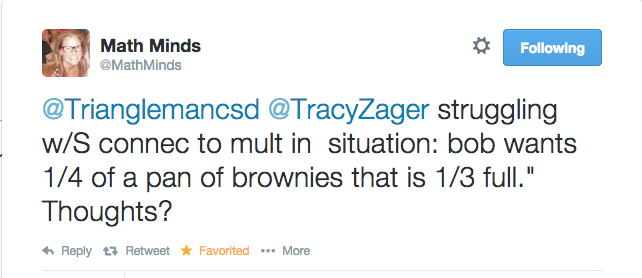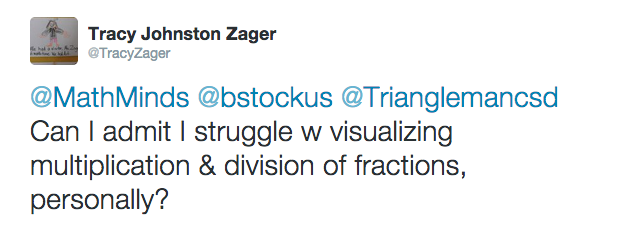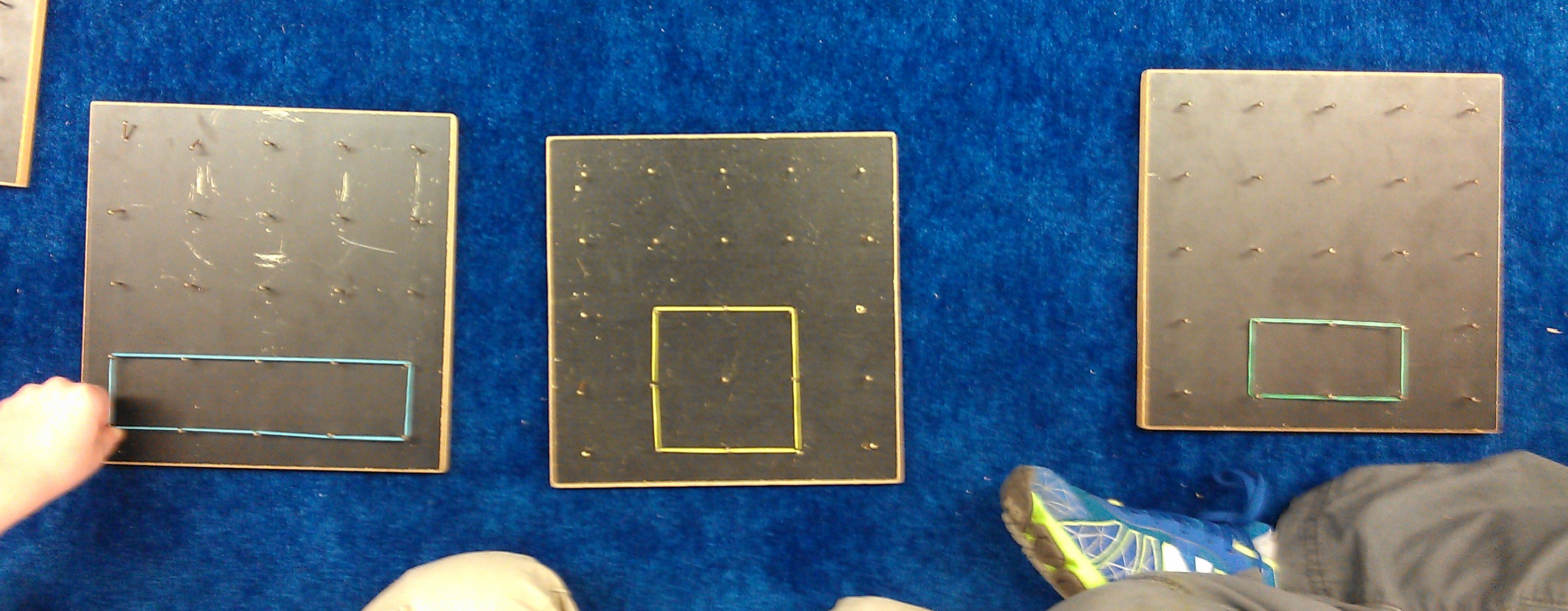This blog was also posted at Stenhouse’s blog.
My daughters and I climbed in the car to go shoe shopping before their first day of school. I sat in the driver’s seat while they buckled themselves into their car seats, and noticed I was keeping track of the loud clicks I heard for each buckle. I took the opportunity to open a math conversation with my kids.
“I didn’t look, but I know you’re all buckled. How could I know that?”
Daphne, age 5, said, “You looked in the mirror!”
“I did not look in the mirror!”
Maya, age 7, said, “You must have counted the clicks! So, you heard 6 clicks and knew we were all buckled.”
I asked, “How would 6 clicks tell me you’re both buckled?”
Maya answered, “Because each car seat has 3 buckles, and 3 times 2 is 6.”
Daphne started to cry. “That’s what I was going to say!”
I turned to Daphne. “Tell me where the 6 comes from, in your own words.”
Daphne said, “Each car seat has 3 buckles, and 3 plus 3 is 6.”
Ah! There was my first opening.
“Maya, you said 3 times 2 is 6. And Daphne, you said 3 plus 3 is 6. Can those both be true? They sound different.”
Maya and I played with this idea for a few minutes, but I could see in the mirror that we were losing Daphne. When Maya and I were done, I asked a question just for Daphne.
“Daphne, what if we had 3 car seats? How many clicks would I hear then?”
There was a long pause while she thought, Maya waited, and I drove.
“Nine!”
“How did you figure that out?”
“Well, I remembered the 6, and then I said 7, 8, 9.”
Maya gasped. “Daphne, you’re counting on again!”
Daphne beamed, and said, “I know!”
We were all excited because Daphne had counted on for the very first time that morning, when we were baking popovers. I asked, laughing, “Since when are you counting on? How did you learn that?”
Daphne said, “Well, you gave me a lot of time to think. You didn’t say anything, and you didn’t tell me what to do. You just listened, so then I could figure it out for myself.”
My jaw dropped. For the rest of the car ride, Daphne talked about how school should be filled with lots of time when the teacher “doesn’t say anything and lets the kids think, because that’s how we can learn. The teacher can just listen.” There was so much wisdom in what she was saying that I asked her if we could make a quick video once I parked the car.
Daphne knows what she needs to learn math: time and something tricky to figure out.
“Do you like when a problem is tricky?”
She nodded.
“How come?”
“Because then I get some time to THINK, and I LEARN something.”
I am a teacher, and I also coach other teachers. How many times have we all talked about think time, and how important it is? But, here’s the truth: about halfway during the time Daphne was thinking about the fourth car seat, I got a little nervous. I tried to keep my face encouraging on the outside, but on the inside, I heard a tiny voice:
“Uh oh. Maybe this problem is too hard.”
“Should I help her?”
“What would be a good question to help her?”
While I was secretly worrying, Daphne was calmly figuring out how many clicks four car seats would make. To a teacher who makes decisions every few seconds, 20 seconds of think time–which is what Daphne took to solve this problem–feels like an eternity. New teachers, in particular, tend to break silences after a second or two with some kind of “help.” With practice, I’ve learned how valuable think time is, and I now sustain those long silences. But internally, I still find it hard to quiet that worried voice.
Later that night, after we watched the video together, I asked Daphne about the reason she gave for why counting on is challenging. She’d said, “You have to remember while talking about something else.”
“What did you mean by that, Daph?”
“Well, you have to remember a whole bunch of things. Like, I had to remember the six, because that’s where I started. And I had to remember the three, because I had to stop after three. And I was counting at the same time. It’s a lot to remember!”
“It sure is. Can I tell you something? While you were doing all that, I was wondering if I should help you.”
She looked shocked. “But I didn’t need help, Mommy! I was just thinking!”
“What would have happened if I had said something while you were remembering where to start and where to stop while you were counting?”
“I would have forgotten what I was doing and had to start all over again! That wouldn’t have helped at all, Mommy! That would have been so frustrating!”
“You know, Daphne, you’re making me a better teacher. You’re teaching me, again, that sometimes when teachers want to ‘help’ a student, we’re actually not helping at all. Sometimes we just need to be quiet. And we need to be comfortable with silence.”
“Yeah. So kids can think!”
“Yeah.”
We were quiet for a minute together, each thinking.
“Mommy, can you tell other teachers that too? Tell them what I taught you? To not interrupt us when we’re thinking, and just listen while we figure it out?”
“Yes, honey, I think I can.”







